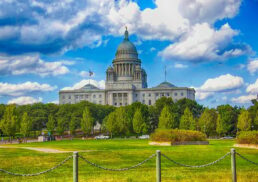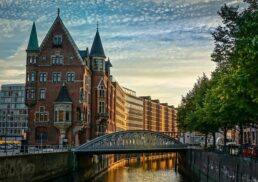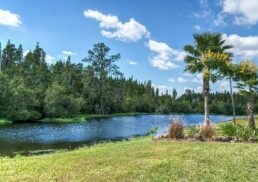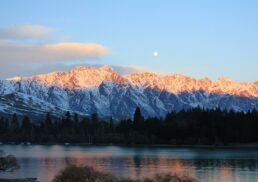Looking for a detailed Baden Germany map to plan your visit? This guide provides you with not just maps, but also insights into top attractions, major cities, historical significance, and natural wonders in the region. Whether you’re prepping for a trip or simply curious about this picturesque part of Germany, read on to get the essential information you need.
Table of Contents
Key Takeaways
Baden is strategically located near major European borders, offering a blend of natural beauty and cultural richness, with attractions such as Lake Constance and the Rhine River.
Major cities like Freiburg, Karlsruhe, and Heidelberg showcase distinct historical significance and vibrant urban experiences that enhance Baden’s charm.
Baden’s well-developed transport infrastructure facilitates easy navigation and cross-border travel, ensuring convenient access to its diverse attractions.
Overview of Baden
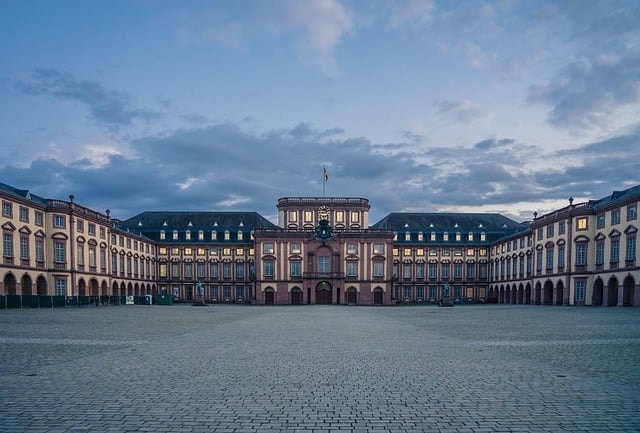
Baden, an enchanting region in southwestern Germany, is bordered by Lake Constance to the south and the majestic Rhine River to the west, which also forms its boundary with France and Switzerland. This geographical positioning makes southern baden a significant area for both natural beauty and strategic importance. The region’s diverse landscape includes everything from lush forests and tranquil lakes to bustling urban centers.
One of the most impressive natural landmarks in Baden is Lake Constance, a large body of water that borders Germany, Austria, and Switzerland. This lake is not only a hub for various water activities but also a scenic wonder that attracts visitors year-round. The Rhine River, another vital waterway, flows along Baden’s western edge, providing both natural beauty and historical significance.
Baden is part of the larger state of Baden-Württemberg, which is known for its rich cultural heritage and economic vitality. The region is easily accessible from major European cities, thanks to its well-connected transport networks. This overview sets the stage for a deeper dive into the detailed maps, cities, and attractions that make Baden a must-visit destination.
Detailed Map of Baden
Navigating through Baden becomes a delightful experience when you have a detailed map at your disposal. The map of Baden showcases prominent cities, towns, and significant landmarks, making it an essential tool for any traveler. Understanding map symbols is crucial as they represent various attractions, services, and features, helping you plan your journey efficiently.
Using tools like Google My Maps, travelers can create personalized routes that include all their desired stops. This customization allows you to explore Baden at your own pace, ensuring you don’t miss out on any must-see locations. Whether you’re interested in historical sites, natural wonders, or urban explorations, a detailed map helps you chart the perfect itinerary.
The map also highlights the Upper Rhine Valley, a picturesque area known for its charming villages and breathtaking vistas. By marking points of interest and planning your routes, you can ensure a seamless travel experience. With a detailed map in hand, Baden’s treasures are just a few steps away from discovery.
Major Cities in Baden
Baden is home to several major cities, each with its unique charm and historical significance. Freiburg im Breisgau, situated in the Black Forest region, is renowned for its vibrant market square and the stunning Freiburg Minster, a Gothic cathedral that dominates the city’s skyline. The Old Town of Freiburg is a testament to the city’s rich history, where medieval architecture blends seamlessly with modern life.
Karlsruhe, another key city, boasts a unique fan-shaped layout radiating from the central palace. This design makes navigation easy and offers a distinctive urban experience. Karlsruhe also became the capital of Baden following the displacement of the capital from Baden-Baden in the 17th century. Its Schloss Karlsruhe is a landmark worth visiting, reflecting the city’s historical and cultural importance.
Heidelberg, known for its university and iconic castle, adds to Baden’s cultural richness. The city’s grid-like street layout allows for easy exploration of its numerous cultural institutions and parks. Each of these german cities, along with other major cities, marked prominently on the map of Baden, offers a unique glimpse into the region’s diverse urban landscape.
Historical Significance of Baden
Baden’s history is a tapestry of medieval grandeur and significant territorial changes. Originally named after Hohenbaden Castle, the residence of the early margraves, Baden’s roots trace back to the House of Zähringen. The region’s historical journey includes the establishment of the Grand Duchy of Baden in 1806, following several reunifications.
During the Middle Ages, Baden-Baden’s thermal waters were famed for their healing properties, attracting visitors seeking relief from various ailments. The town became the seat of the Margraves of Baden in 1112, further cementing its historical importance. However, the War of the Palatinate Succession in 1689 brought destruction to Baden-Baden, leading to a significant loss of its status and infrastructure.
Post World War II, Baden was split into two occupation zones, which later became the states of Württemberg-Baden and South Baden. These historical shifts have shaped Baden into the culturally rich and diverse region it is today, with each era leaving its mark on the land and its people.
Natural Attractions in Baden

Baden’s natural attractions are a major draw for visitors, offering a diverse array of landscapes and activities. The Black Forest, one of Germany’s most picturesque regions, features deep forests and stunning mountain views. Hiking enthusiasts can explore numerous trails, including the renowned Black Forest High Road, which provides breathtaking scenery.
Lake Constance, the largest lake in Germany, is another natural gem. It offers a variety of water activities and scenic beauty that attract visitors throughout the year. The Upper Rhine Valley, with its charming villages and breathtaking vistas, is a popular destination for outdoor enthusiasts. These natural wonders provide a perfect backdrop for relaxation and adventure.
Baden-Baden stands out for its historical connection to the Romans, who established it as a spa town to utilize its hot springs. The Roman baths served not only for healing but also as social hubs for relaxation and gatherings among military personnel and emperors. These attractions highlight the diverse natural beauty and historical significance of Baden.
Transport and Accessibility
Getting around Baden is a breeze, thanks to its well-developed transport infrastructure. Karlsruhe serves as a central transportation hub, making it an ideal starting point for exploring the region. Motor vehicles are popular, with a robust network of roads complementing the public transport system.
Smaller airports in the vicinity of Baden enhance both domestic and international travel options, boosting overall accessibility. Regional train tickets can vary significantly in terms of access and pricing due to differing tariff systems at border stations. Efforts are ongoing to simplify cross-border travel by integrating these systems, making it easier for travelers to navigate the region.
Cross-border travel often faces challenges, but initiatives are being taken to streamline the process and improve connectivity. This ensures that whether by road, rail, or air, visitors can move around Baden with ease and convenience, enjoying all that the region has to offer.
Cultural Highlights
Baden’s cultural scene is as vibrant as it is diverse, offering something for every type of traveler. Historic landmarks like the Altes Schloss in Baden-Baden, constructed in 1102, provide stunning views of the surrounding area. The city of Mannheim is famous for its baroque palace, one of the largest in Germany and a central cultural hub.
During the 19th century, Baden-Baden earned the title of ‘Summer Capital of Europe,’ attracting the cultural elite and becoming a prominent gaming resort. The city continues to thrive culturally, hosting a variety of annual festivals, concerts, and boasting a prominent opera house, the second largest in Europe. The Festival Hall in Baden-Baden, known for its superior acoustics, can hold up to 2,650 guests.
Activities like wine tasting and exploring traditional villages further enrich the cultural experience in Baden. Museums such as the Fabergé Museum, displaying an extensive collection of decorative arts, showcase the region’s rich heritage. These cultural highlights make Baden a must-visit destination for anyone seeking to immerse themselves in art, history, and tradition.
Administrative and Rural Districts
Baden is divided into a well-structured administrative framework, featuring four main administrative districts, which are further organized into multiple smaller municipal divisions. Baden-Württemberg consists of 35 districts and 9 independent cities, organized into 4 administrative regions. This structure ensures efficient governance and regional development.
The governance of Baden has evolved significantly over time. Historically, the region was governed by an elected president chosen from the Baden Landtag, serving a term of one year. However, significant political shifts, including those during the Nazi regime, saw changes in local governance, with officials replacing locally elected leaders.
Today, the german state government is influenced by various political parties, with the Christian Democratic Union dominating until a shift occurred in 2011. The region’s administrative and rural areas present a harmonious blend of urban and rural life, with the Rhine forming a significant natural border along its western edge, which is part of western europe.
International Borders and Neighboring Regions
Baden-Württemberg’s strategic location places it at the crossroads of several borders, sharing boundaries with Alsace, France, Switzerland, Austria, and several German states. This proximity facilitates easy cross-border travel and cultural exchanges. The region shares a border with France at Strasbourg and with Austria, enhancing its international connectivity.
At the France-Germany border, the Deutschlandticket is valid for travel to French towns like Lauterbourg and Wissembourg, although French tickets are not accepted on the German side. Local festivals in Baden-Baden often reflect its historical ties and cultural exchanges with neighboring regions, particularly German-speaking Switzerland and France.
These international borders and neighboring regions contribute to Baden’s rich cultural mosaic, offering travelers a unique blend of experiences from different parts of Europe. Cross-border travel issues are being addressed to make the journey smoother for visitors, ensuring seamless exploration of this diverse region.
Maps and Resources
Travelers in Baden can utilize a variety of online tools and mobile apps to plan their journeys, check schedules, and purchase tickets efficiently. Official tourism websites for Baden-Wurttemberg provide downloadable maps and resources for visitors. These maps highlight key attractions, including historical and cultural sites, ensuring a comprehensive travel plan.
Detailed maps available online showcase attractions across Baden, from natural wonders to urban landmarks. By leveraging these resources, travelers can create personalized itineraries that cater to their interests and schedules. This section ensures that readers have access to all necessary tools for efficient and enjoyable travel planning.
With these maps and resources, planning a trip to Baden becomes an exciting and hassle-free experience. Whether you prefer digital tools or traditional maps, the region’s attractions are at your fingertips, ready to be explored.
Learn more, check out Things To Do in Baden Baden.
Summary
Baden is a region of diverse attractions, blending natural beauty, historical depth, and vibrant culture. From the serene landscapes of the Black Forest and Lake Constance to the historical cities of Freiburg and Karlsruhe, there is something for every traveler. The region’s rich history, cultural highlights, and comprehensive maps and resources make it an ideal destination for a memorable journey.
As you plan your visit to Baden, remember to immerse yourself in its unique blend of experiences. Whether you’re exploring ancient castles, hiking through the Black Forest, or enjoying a relaxing spa day in Baden-Baden, this guide provides all the information you need. So, set your sights on Baden and embark on an adventure that promises to be both enriching and unforgettable.
Frequently Asked Questions
What are the major cities to visit in Baden?
The major cities to visit in Baden are Freiburg im Breisgau, Karlsruhe, and Heidelberg, known for their distinctive historical and cultural attractions.
How can I navigate through Baden efficiently?
To navigate through Baden efficiently, utilize detailed maps and tools like Google My Maps for personalized routes, while taking advantage of the city’s well-developed transport system, including regional trains and vehicles. This approach will ensure a smooth travel experience.
What are some must-see natural attractions in Baden?
The must-see natural attractions in Baden include the Black Forest, Lake Constance, and the Upper Rhine Valley, each providing stunning scenery and a variety of outdoor activities. Plan to visit these locations to fully appreciate their breathtaking beauty.
How does Baden’s historical significance enhance my visit?
Baden’s historical significance enhances your visit by offering a deep cultural experience through its well-preserved sites, such as the Altes Schloss and Roman baths, which reflect its medieval heritage and Grand Duchy status. Engaging with these landmarks allows for a profound appreciation of the city’s storied past.
What cultural highlights can I experience in Baden?
You can experience a vibrant cultural scene in Baden through its annual festivals, concerts, historic landmarks like the Altes Schloss, and museums such as the Fabergé Museum. These highlights provide a rich insight into the region’s heritage and artistic expressions.


